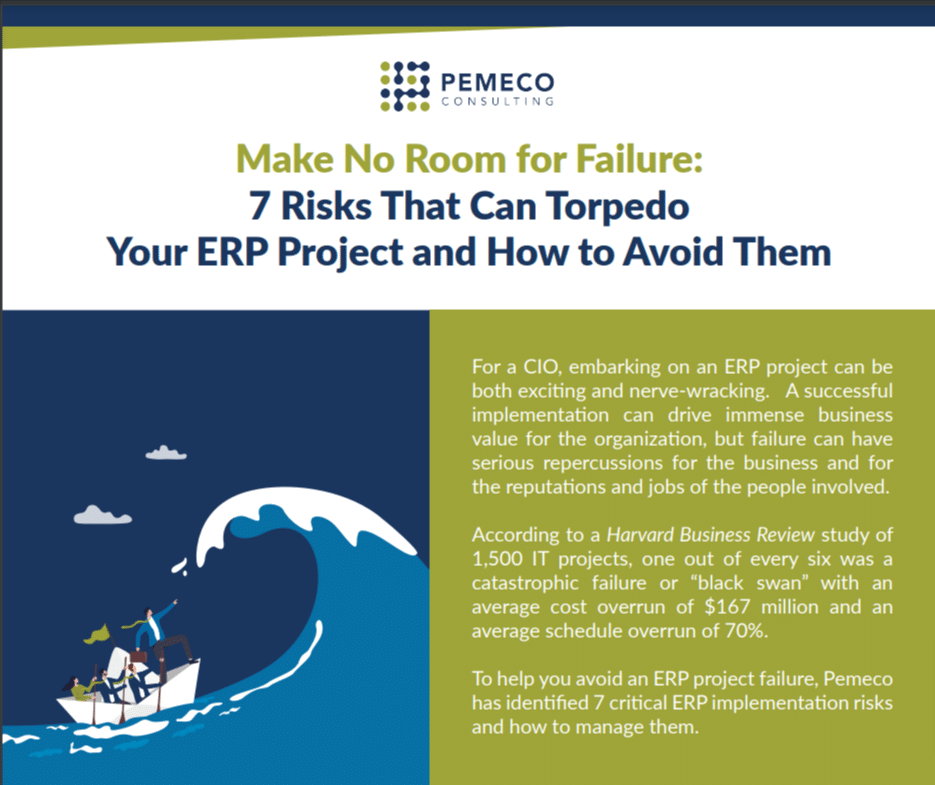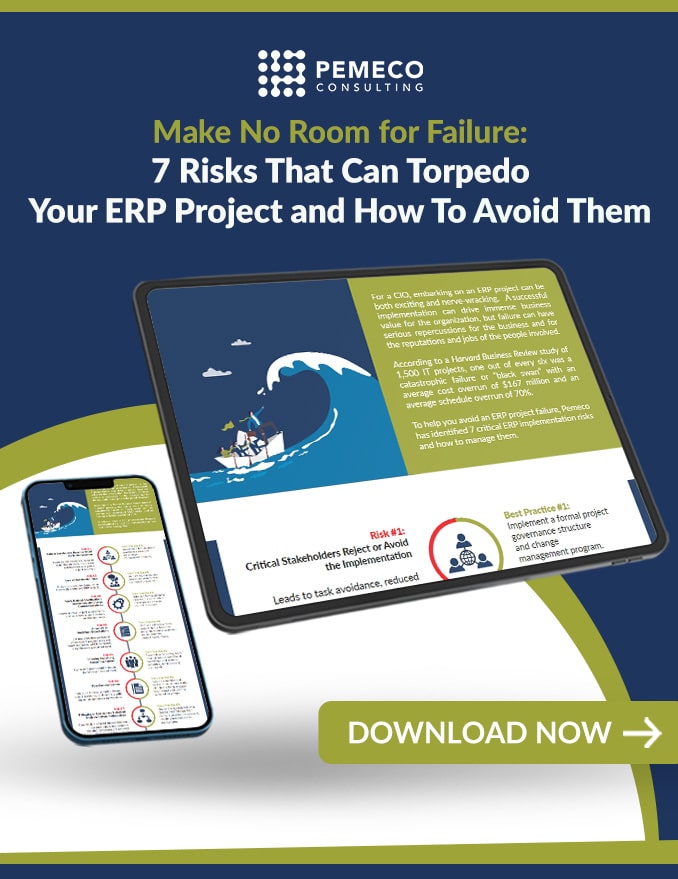The promise of ERP software is enticing. Enterprise Resource Planning is designed to make your business run smoother and make your job easier. At least, in the beginning, the vision of software that manages all aspects of your business is enticing. But too many companies forget an equally important aspect of the business when they implement an ERP—the human element.
Business is not pure logic and process. It depends on people to execute tasks and make decisions. If people don’t adopt new systems or processes, your implementation will probably fail. Anticipating and dealing with range human emotions is key to ERP system adoption. Learn to see how your team could react to a new system before it’s ever put in place.
The ERP Emotional Curve
92% of ERP implementations fail.
How does this happen? At the beginning of the process, the lure of a one-size-fits-all software that encapsulates the daily activity of your business sounds so good. The challenge is that your business will go through a typical and predictable emotional rise and fall during the initial stages.
The good news is that these emotional reactions are predictable. We’ve seen them on each of our 700-plus implementation projects. Although you can’t entirely avoid these predictable emotions, you can prepare for them. Once you understand that the “Emotional Curve” is just a natural process of adopting any ERP, you work through it to find success on the other end of the curve.
Resistance
“Am I going to be automated out of a job?”
“I’ve been doing my job this way for 15 years. How could I possibly change?”
“I just don’t see how I can possibly learn these new technologies or processes.”
When companies pursue enterprise software-driven business transformations, people tend to fear new technologies and processes. It’s natural for people to look at anything new as potentially harmful and disruptive. There are more questions than answers, and some people don’t tolerate ambiguities – or uncertainties about the future – very well. Dealing with unfamiliar technology is often a fear that team members have about ERP software. Also, the consequences of implementing reach into every part of the business so no one feels sheltered from a potentially flawed decision.
This stage typically becomes manifest when executives hand down the directive to select and implement new ERP, causing a break in trust. The higher echelons typically have a whole-forest view while the team is left to resolve the finer details of how it works.
Remind your team that pushing past this stage is worth the reward of seeing the potential of a successful implementation just around the corner.
Euphoria
“Oh wow! I can run my daily production effectiveness reports with a single-click.”
“I no longer have to enter the same data into two systems and three spreadsheets.”
“I don’t have to chase the warehouse manager to find out whether I have inventory to sell to my customer!”
Typically, euphoria sets in after the users present the new business processes in the Walkthrough phase. The team experiences its “Eureka” moment when it clearly understands the benefits of the new systems, streamlined processes, and improved reporting.
Though it’s important to let the team experience the excitement, it’s equally important that they temper the excitement with knowledge that things are going to get harder. It’s important to remind the team members that they’re going to descend into a dark place as they face the reality of dealing with the many gaps and issues that need resolution. Each team member has to increase their already burdensome workload through piloting, data migration, and cutover.
Desperation
“What have we done? The old system was way easier. I can’t keep up. Why did we change when our old ways were just fine?”
You’ve pulled the plug on your legacy systems and cut-over to the new system. For now, it takes you longer to complete your work tasks, you’re still learning the new system, and you’re dealing with implementation gaps and issue. The job becomes harder than it ever was with the old systems. Combine this with the longing for the past systems and your downward spiral picks up pace. Morale drops dramatically. You’re in despair. You’ve hit the bottom of the Emotional Curve.
Again, the ability to foresee this stage and the knowledge that it will end is enough to keep going. This dip is normal, predictable, just as surely as the eventual rise out of it.
Recovery
“We did it! This is the reason we implemented the new system!”
More than excitement, the relief at this stage comes from months of hard work to ensure a successful ERP implementation. The new processes become routine and the people become used to running the business with new and improved tools. The recovery stage is another high emotional state on the “Emotion Curve,” but it’s the final stage of the process. It’s different from the Euphoria stage in that it allows your business to see the results of a successful ERP combined with the knowledge that the end is in sight.
It’s a grind to reach this stage, involving hard work, communication, all-level adoption, and a commitment to work through challenges, but the Recovery stage is rest and reprieve from the ups and downs from the ERP emotional curve. As they say, “no pain, no gain”.
Working through the Emotional Curve
How does your business get through the emotional roller coaster of an ERP implementation? Start with an understanding that it will happen. Your team should be aware that there will be significant challenges as well as states of elation along the way.
The best way is to have a stable methodology to work through the Emotional Curve, such as the Pemeco Milestone Deliverables, which keep everyone focused on the deliverables. The clarity of your mission, as well as the steady increase in deliverable results, is a simple way to provide the tools to navigate out of the Emotional Curve.
Need to learn more about Milestone Deliverables?
We wrote the book. Read Milestone Deliverables: ERP Project Management Methodology.








